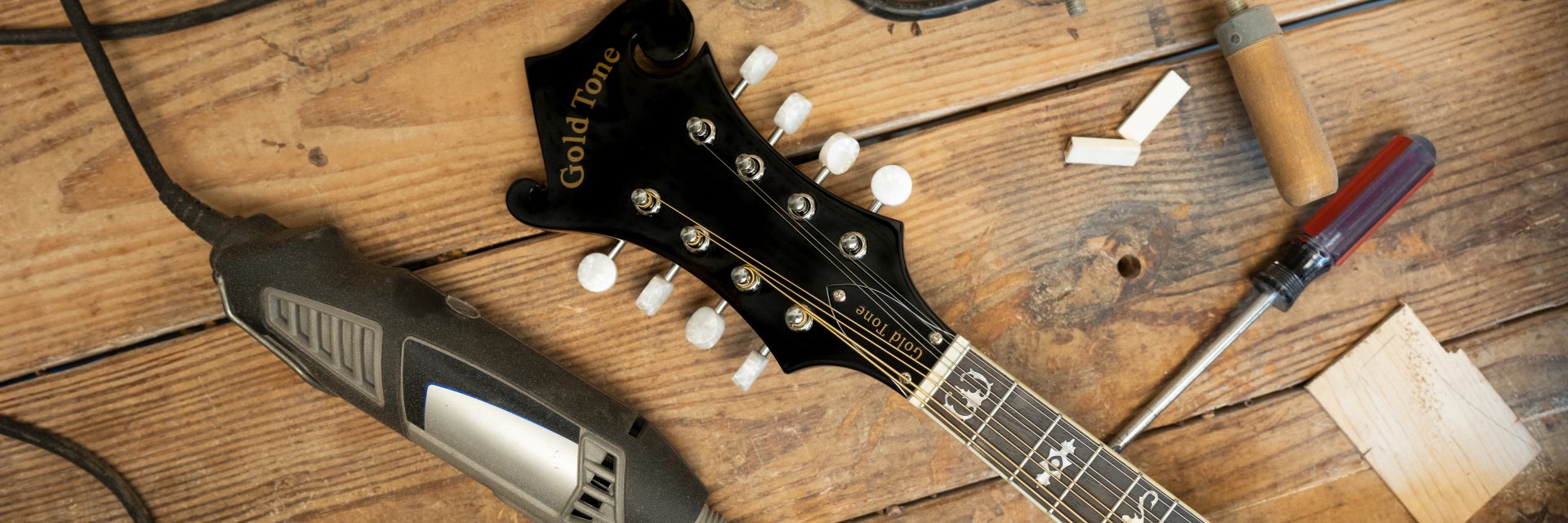
The mandolin is a beautiful and versatile instrument, known for its bright, crisp tones and its ability to add a touch of elegance to various genres of music. With its eight strings arranged in pairs, the mandolin offers a range of possibilities for a variety of tunings, allowing musicians to explore different musical styles and create unique sounds. In this article, we will dive into the world of mandolin tunings, examining some popular options and their applications.

GDAE
Starting from the lowest-pitched string, the standard mandolin is tuned G, D, A, and E, respectively. Remember, the mandolin has eight doubled strings, so this tuning really is GG, DD, AA, and EE. This tuning provides a balanced range and allows for easy chord shapes and melodic playing. It’s the go-to tuning for most beginners and professionals. Standard tuning is widely used in bluegrass, folk, and traditional music.
While standard tuning serves as a solid foundation, mandolin players often explore alternative tunings to unlock new tonal possibilities and expand their musical horizons. Let’s dive into a few notable alternate tunings for the mandolin!
FCGD
This tuning is called Cajun Tuning. One whole step down from the standard GDAE, Cajun tuning on the mandolin provides an opportunity for musicians to capture the spirit and authenticity of Cajun and Creole music. Whether you’re a seasoned mandolin player or an enthusiast looking to explore new tunings, Cajun tuning can add a touch of Louisiana flair to your musical repertoire.
GDGB
Open G tuning on the mandolin is commonly used in various genres such as blues, folk, and slide playing. It allows for easy access to G major chords and facilitates slide techniques by providing open-string drones and sympathetic resonances. The lower tonal center of this tuning lends itself to a full and rich sound, making it particularly suitable for creating a powerful and bluesy atmosphere.
GDGD
Known as Sawmill Tuning or Cross G Tuning, it offers a unique tonal palette that differs from the more common tunings. The open G chord provides a rich, resonant foundation for playing melodies, chords, and drones. The doubled G strings create a drone-like effect, adding depth and character to the sound.
GDAD
Gee-Dad tuning allows musicians to fully immerse themselves in the rich musical heritage of Celtic and Irish traditions. Whether you’re an aspiring mandolin player or an enthusiast looking to expand your repertoire, Gee Dad tuning offers a captivating alternative to standard tuning, enabling you to embrace the rhythms of Celtic music.
DDAD
Commonly known as Open D Tuning, this tuning is often associated with traditional tunes and gives a full and deep sound on the mandolin. It enables easy access to major and minor chords, making it suitable for both chordal accompaniment and solo playing. Some other names for this tuning include Dead Man’s Tuning, Bonaparte’s Retreat Tuning, or “Dee-Dad”.
ADAE
High Bass Tuning or Old-Timey D Tuning provides a rich and resonant sound with a focus on the lower register. The open A chord serves as a strong foundation for playing melodies and harmonies, while the doubled A strings add depth and a bass-like quality to the instrument.
AEAE
This is called Cross Tuning. Sometimes referred to as Cross A, Cross Chord, High Bass, High Bass High Counter, or even High Bass High Tenor. Similar to Sawmill Tuning, this tuning evokes a nostalgic and rustic sound. The doubled A strings and the interval of a fifth between the second and third strings provide a distinctive sound that captures the essence of traditional American music.
AEAC#
Known by several names, this tuning can be called Open A Tuning, Drunken Hiccups Tuning, Black Mountain Rag Tuning, or even Calico Tuning. It is often used in bluegrass and old-time folk music, characterized by raising the first string to A, lowering the third string to E, and raising the fourth string to C♯. It provides a vibrant and dynamic sound with interesting harmonic possibilities.
Mandolins offer a world of possibilities when it comes to tunings. Many Gold Tone traditional mandolins are tuned to GDAE as this is most common. However, we encourage musicians to explore the full potential of their instruments by using alternative tunings. Aside from our traditional mandolins, we also offer “Folkternative” mandolins like mandolin-guitar hybrids, solid body mandolins, and more. Our instruments with more Irish descent, such as the BZ-1000 and BZ-500, come with the alternative tuning GDAD as it is a better fit for those models.
